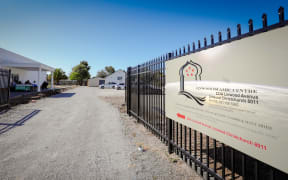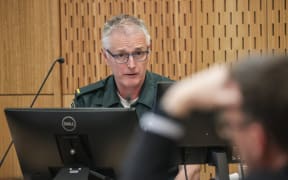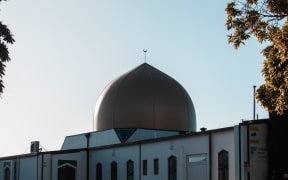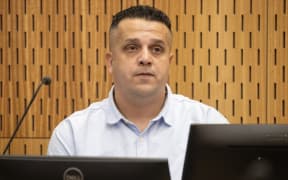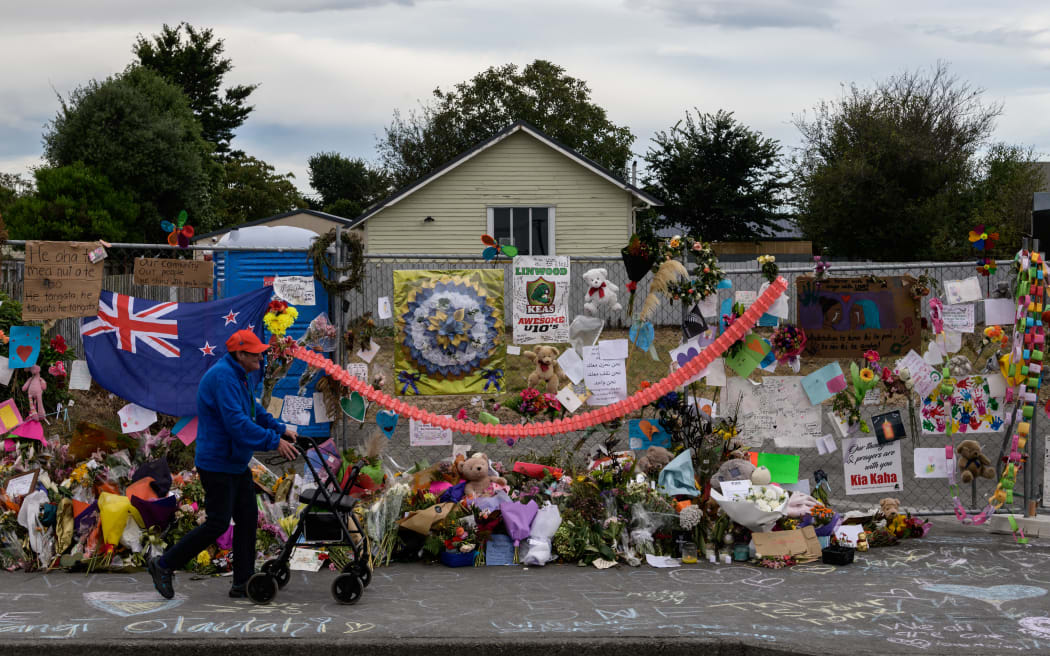
Flowers and tributes outside Christchurch's Linwood Islamic Centre following the terror attacks on 15 March 2019 (file photo). Photo: AFP / ANTHONY WALLACE
An Armed Offenders Squad medic says he was not aware of a "load and go" strategy for police helping worshippers shot in the terror attack at Christchurch's Linwood Islamic Centre, because ambulance paramedics were so stretched.
An inquest into the 2019 massacre has heard officers at the scene knew ambulances would be held up at nearby Al Noor Mosque - the scene of the gunman's first rampage - and the chance of getting them to Linwood Avenue was slim.
As a result, police used their own cars to rush the bullet-injured to hospital.
The Armed Offenders Squad (AOS) medic told the Coroners Court that while "time evaporated quickly" he was expecting ambulances and could not recall being told they were unlikely to come.
The officer, who cannot be named, said this was a discussion that should have been had if it was not.
He also could not remember an AOS team leader ever telling him police were taking victims to hospital themselves under a "load and go" approach.
His focus was on having police treat patients at the scene to the best of their ability.
But the AOS officer said he would seriously consider such an approach if a similar situation happened again.
"It's something that, as medics and staff of AOS, we would consider, essentially weighing up the benefits of load and go versus staying and treating or waiting for ambulance staff," he said.
"It depends on the situation, there's no hard and fast rule. There never can be."
The court heard the AOS medic was in Christchurch on 15 March for a police training course, alongside specialist officers from Australia and Hong Kong.
They raced to Linwood to help when news of the shooting emerged.
The AOS member said he helped to clear cars from outside the mosque before directing other staff to give first aid to survivors with gunshot wounds to their backs, chests and lower bodies.
A senior police officer became emotional on the stand while describing the scene he came across at Linwood mosque.
On his arrival, the officer, who cannot be named, believed there were up to six armed offenders and quickly formulated a plan with six other officers to approach the mosque.
There was a "large" number of people associated with the mosque standing on the driveway, he said.
Aware of the possibility that an offender may be posing as a victim, the officer said they had to all be treated as potential threats until it was clear they were not, he said.
Through tears, the policeman told the court what he saw as he continued to approach the mosque.
"As I walked up the driveway, I could see a body lying face down on the ground. This appeared to be a male. This male was motionless and appeared to me to be fatally injured. He appeared to have a wound to his head.
"There was a silver car in front of this male as I came down the driveway from Linwood Ave. As I walked around the front of the vehicle, I could see a female lying face down. She appeared to be breathing but had significant head and facial injuries which I believed were non-survivable."
Another male was lying in a puddle, the police officer said.
He leant down and touched his neck, looking for a response or a pulse. With no response, he formed the belief that he was also deceased.
Once AOS arrived and took over the scene, the policeman assisted in removing victims and covering the rear of the property.
Later, he was tasked to pull over a suspicious vehicle that had tried to breach a cordon.
It was discovered the driver was a worshipper who was unable to get in contact of his family and had become aggressive at the cordon due to his distress, he said.
He was released shortly after, the officer said.
The inquest will examine the following 10 issues over six weeks:
- Events of 15 March 2019 from the commencement of the attack until the terrorist's formal interview by police
- Response times and entry processes of police and ambulance officers at each mosque
- Triage and medical response at each mosque
- The steps that were taken to apprehend the offender
- The role of, and processes undertaken by, Christchurch Hospital in responding to the attack
- Coordination between emergency services and first responders
- Whether the terrorist had any direct assistance from any other person on 15 March 2019
- If raised by immediate family, and to the extent it can be ascertained, the final movements and time of death for each of the deceased
- The cause of death for each of the victims and whether any deaths could have been avoided
- Whether Al Noor Mosque emergency exit door in the southeast corner of the main prayer room failed to function during the attack and, if so, why?
The inquest continues.
